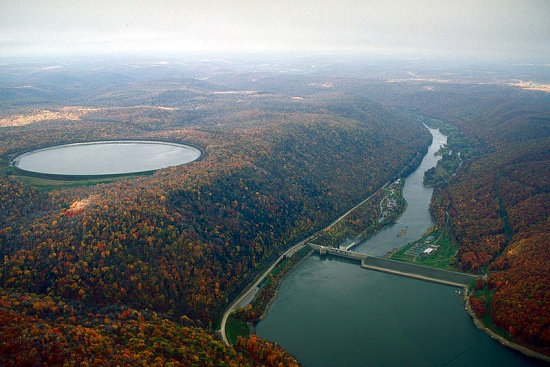Environment & Energy
Related: About this forumHow Carbon Dioxide Regs Could Actually Hurt Renewables
http://www.technologyreview.com/view/518396/how-carbon-dioxide-regs-could-actually-hurt-renewables/August 15, 2013
[font size=5]How Carbon Dioxide Regs Could Actually Hurt Renewables[/font]
[font size=4]By forcing changes in how gas power plants operate, greenhouse regulations could actually make it more difficult for utilities to use renewables.[/font]
[font size=3]GE is telling the White House that if the Environmental Protection Agency sets too stringent greenhouse gas regulations for existing power plants, it could have the unintended consequence of limiting the amount of renewable energy the grid can handle.
The EPA is proposing rules for power plants that would limit their carbon dioxide emissions. The rules would make life hard for coal plants, but are supposed to allow natural gas power plants to keep running—since they emit much less carbon dioxide.
But the rules could actually shut down (or limit the operation of) a certain kind of natural gas power plant—a type of plant that’s essential for incorporating renewable energy into the power grid. These are natural gas plants designed to quickly change power output to accommodate fluctuations in electricity production from wind farms and solar power plants. When they ramp up and down, they operate less efficiently, so they emit more carbon dioxide.The plants might not be able to ramp up and down fast enough to accommodate renewables, while still meeting stringent regulations.
GE argues that by making it harder to use renewable energy, a rule that shut down these natural gas power plants could actually lead to increased total carbon dioxide emissions.
…[/font][/font]
pscot
(21,024 posts)Just craft the rules to accomplish the desired ends. Could GE's intervention be motivated by self interest?
GliderGuider
(21,088 posts)They have nothing but the highest public good at heart. They're just bringing good things to light, you know.
FogerRox
(13,211 posts)cprise
(8,445 posts)Hydro was expanded to accommodate the difference between fluctuating demand and steady nuclear output. Now that nuclear is subsiding, can hydro be put to use for wind and solar?
OKIsItJustMe
(19,938 posts)Unfortunately, “pumped hydro” is more useful in certain topologies than others.http://www.eia.gov/todayinenergy/detail.cfm?id=6910

Source: U.S. Army Corps of Engineers.
[font size=3]The Seneca Pumped Storage Generating Station in northwest Pennsylvania takes advantage of the local topography by filling a reservoir at a higher elevation than the dam below. The facility can be operated purely as a 435-MW hydroelectric power plant, generating power to supply demand for electricity, or as a pumped storage facility, providing energy management and load leveling services while taking advantage of differences in the wholesale price of electricity over the course of the day or the week. Overnight, a reversible hydroelectric turbine is powered by low-cost electricity from the grid, pumping water from the lower reservoir behind the dam (right) up to the upper reservoir on the bluff (left). During the daytime peak hours, this water is then released back "downhill" and through the hydroelectric turbine to produce electricity, which is sold to the grid at the higher, on-peak prices.
Pumped storage is a long-proven storage technology, however, the facilities are very expensive to build, may have controversial environmental impacts, have extensive permitting procedures, and require sites with specific topologic and/or geologic characteristics. As estimated in a report commissioned by EIA, the overnight cost to construct a pumped hydroelectric plant is about $5,600/kW, higher than the $3,100/kW for a conventional hydroelectric plant. A conventional natural gas combustion turbine, which might be used to supply the peak daytime power added by the pumped storage plant, is $1,000/kW, though hydroelectric operating costs are much lower than those of a combustion turbine.[/font][/font]
kristopher
(29,798 posts)...timetable that encourages investment in combined cycle gas turbines or other solutions that can fill the dispatchable need.
Near term economic penalties should focus on changing the structure of the entire system away from centralized generation and building the functional framework for a distributed generation grid, so it makes sense to use the facilities that are in place to accomplish that. However, in the not too distant future (10-15 years?) we'll need to start tightening the noose to improve the efficiency of the structure we've built. Whatever rules we write now should have that requirement in mind.